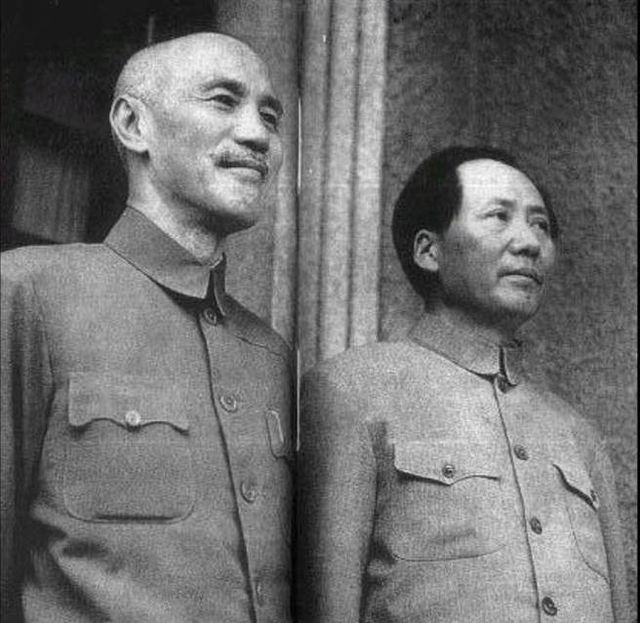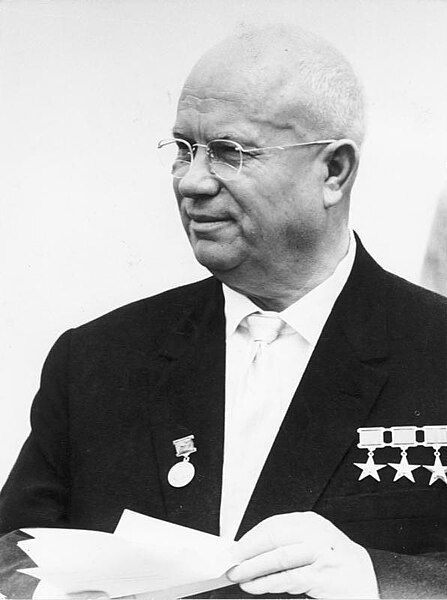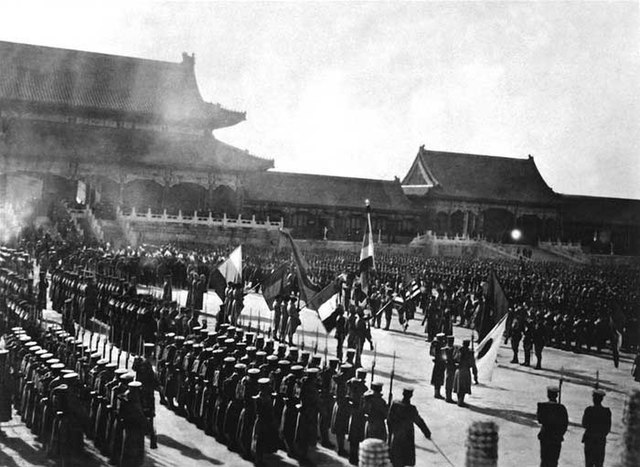The Sino-Soviet split was the gradual deterioration of relations between the People's Republic of China (PRC) and the Union of Soviet Socialist Republics (USSR) during the Cold War. This was primarily caused by doctrinal divergences that arose from their different interpretations and practical applications of Marxism–Leninism, as influenced by their respective geopolitics during the Cold War of 1947–1991. In the late 1950s and early 1960s, Sino-Soviet debates about the interpretation of orthodox Marxism became specific disputes about the Soviet Union's policies of national de-Stalinization and international peaceful coexistence with the Western Bloc, which Chinese leader Mao Zedong decried as revisionism. Against that ideological background, China took a belligerent stance towards the Western world, and publicly rejected the Soviet Union's policy of peaceful coexistence between the Western Bloc and Eastern Bloc. In addition, Beijing resented the Soviet Union's growing ties with India due to factors such as the Sino-Indian border dispute, and Moscow feared that Mao was too nonchalant about the horrors of nuclear warfare.

Mao Zedong (left) and Nikita Khrushchev (right) in Beijing, 1958
In the Asian theatre of World War II, Chiang Kai-shek of the KMT was kidnapped by one of his own officers and forced to ally with the Communist Mao Zedong of the CCP as reluctant co-belligerents to expel Imperial Japan from China.
Chairman Mao with US journalist Anna Louise Strong, whose work presented and explained the Chinese Communist revolution to the Western world. (1967)
The Sino-Soviet split arose from the ideological clash between Soviet first secretary Khrushchev's policies of De-Stalinisation and peaceful coexistence and Mao Zedong's bellicose and Stalinist policies.
China, officially the People's Republic of China (PRC), is a country in East Asia. With a population exceeding 1.4 billion, it is the world's second-most populous country. China spans the equivalent of five time zones and borders fourteen countries by land. With an area of nearly 9.6 million square kilometers (3,700,000 sq mi), it is the third-largest country by total land area. The country is divided into 33 province-level divisions: 22 provinces, five autonomous regions, four municipalities, and two semi-autonomous special administrative regions. Beijing is the national capital, while Shanghai is its most populous city and largest financial center.
10,000-year-old pottery, Xianren Cave culture (18000–7000 BCE)
Yinxu, the ruins of the capital of the late Shang dynasty (14th century BCE)
China's first emperor, Qin Shi Huang, is famed for having united the Warring States' walls to form the Great Wall of China. Most of the present structure dates to the Ming dynasty
The Eight-Nation Alliance invaded China to defeat the anti-foreign Boxers and their Qing backers. The image shows a celebration ceremony inside the Chinese imperial palace, the Forbidden City after the signing of the Boxer Protocol in 1901.








